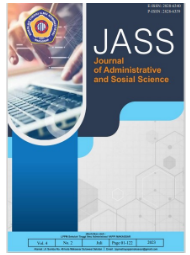Contribution of Technology Adoption to the Environmental and Socio-Economic Conditions of Vegetable Producers in Svay Rieng Province
DOI:
https://doi.org/10.55606/jass.v6i2.2150Keywords:
Agricultural Technology, Benefits of Technological Adoption, Rural DevelopmentAbstract
Extension workers have been instrumental in encouraging farmers to adopt new technologies, aiming to improve productivity, income, social status, and climate resilience. This study investigates challenges in technology adoption and its impact on vegetable production, economic and social enhancement, and climate resilience in Svay Rieng province. Data from 302 agricultural cooperative members were analyzed using Pearson’s correlation to examine relationships and linear regression to predict factors influencing farmers' achievements. Results show that internal challenges (labor, capital, technical know-how) significantly influence success, followed by external challenges. Investments in hard technologies (e.g., net houses, drip irrigation) strongly correlated with achievements, while soft technologies (technical knowledge) had a lesser impact. Regression analysis identified internal challenges and adoption of hard technologies as key predictors, explaining 25% of overall performance, including 36%, 29%, and 25% of economic, social, and climate resilience improvements, respectively. For production, only internal challenges and hard technologies were determinants, predicting 30%. Addressing internal challenges and enhancing technology applications are critical to improving vegetable producers' success in the province.
References
Naga, A., & Siva, M. R. K. (2020). Farm technology adoption in farming: An application of TAM model. PalArch’s Journal of Archaeology of Egypt/Egyptology, 17(6), 8796–8805.
Brian, C. (2024). Opening the agricultural extension ‘black box’: Farmer experiences in the context of agrarian change. https://farmerdecisionmaking.com/wp-content/uploads/2022/07/FUAT-Report-Ag-extension-black-box-Cook-1.0.pdf
Brian, C. R., Paula, S., & Jayne, C. (2021). Humanising agricultural extension: A review. World Development, 140, 1–19.
Chun, N., Hong, C., Kang, T., & Inn, S. (2021). On-farm effects of drainage system on the productivity of Chinese cabbage (Brassica pekinensis L. Rupr.) of farmers in Svay Rieng Province, Cambodia. Journal of Agricultural Science and Technology B, 11, 121–125.
Hong, C., Chun, N., Kang, T., & Inn, S. (2021). On-farm effects of drainage system on the productivity of Chinese cabbage (Brassica pekinensis L. Rupr.) of farmers in Svay Rieng Province, Cambodia. Journal of Agricultural Science and Technology B, 11, 121–125.
Ke, S., & Babu, S. C. (2018). Agricultural extension in Cambodia: An assessment and options for reform. Phnom Penh, Cambodia: International Food Policy Research Institute (IFPRI).
Keo, S., & Roth, V. (2023). Sources of information diffusion and adoption of agricultural technologies: Evidence from Cambodia. Phnom Penh: International Fund for Agricultural Development (IFAD).
Ministry of Agriculture, Forestry, and Fisheries (MAFF). (2019). Manual for agricultural extension workers at commune level. Phnom Penh, Cambodia.
Md. Khaled, A., & Jinghua, L. (2014). Applying farmer technology acceptance model to understand farmers’ behavioral intention to use ICT-based microfinance platform: A comparative analysis between Bangladesh and China. In WHICEB 2014 Proceedings 31 (pp. 123–130). Wuhan.
Muhammad, F. Y., Wildfred, D., & Domenico, D. (2020). Understanding agricultural innovation adoption in developing countries: An Indonesian study. Wageningen University & Research.
Provincial Department of Agriculture, Forestry and Fisheries (PDAFFF). (2020). Provincial agriculture strategic development plan Svay Rieng Province 2019–2023. Svay Rieng Province.
SAAMBAT Project. (2020). Need assessment of traceability system for vegetable value chain. Phnom Penh.
Thort, C. (2019). Adopting of horticultural innovations to small-scale vegetable farmers in Cambodia: Connecting to what I have learned in IAD. University of California, Davis.
Viswanath, V., & Davis, F. D. (2000). A theoretical extension of the Technology Acceptance Model: Four longitudinal field studies. Management Science, 46(2), 184–204. https://doi.org/10.1287/mnsc.46.2.186.11926
Viswanath, V., & Bala, H. (2008). Technology Acceptance Model 3 and a research agenda on interventions. Decision Sciences, 39(2), 273–316.
Viswanath, V., Morris, M. M., Davis, G. B., & Davis, F. D. (2012). User acceptance of information technology: Toward a unified view. MIS Quarterly, 36(2), 425–478.
Downloads
Published
How to Cite
Issue
Section
License
Copyright (c) 2025 JOURNAL OF ADMINISTRATIVE AND SOCIAL SCIENCE

This work is licensed under a Creative Commons Attribution-ShareAlike 4.0 International License.








